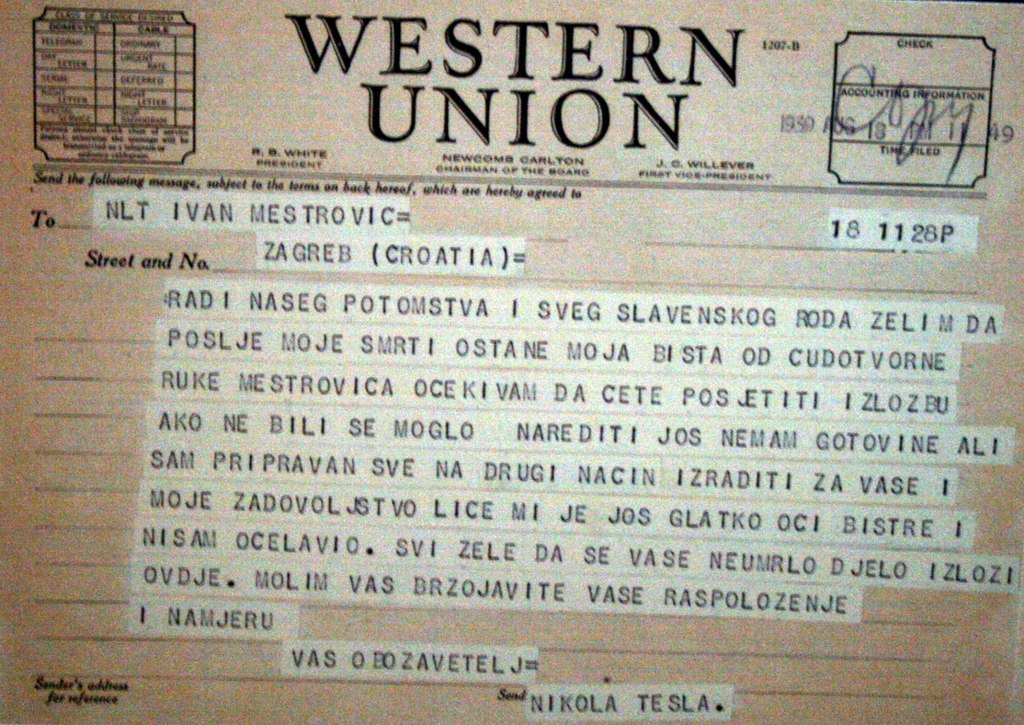Tesla & Friends Event to Take Place Between the 9th and 11th of July
ZAGREB, 3 July 2022 - The Tesla & Friends event will take place in Zagreb from 9 to 11 July and will include the presentation of annual awards and a conference on smart and innovative cities.
The event is organised by the Nikola Tesla - Genius for the Future association to mark the 116th anniversary of the birth of the famous scientist and inventor and the ninth Nikola Tesla Day, the day of science, technology and innovation.
It will open with a demonstration of Tesla's experiments at the Nikola Tesla Technical Museum. In the evening of the same day, 9 July, a multidisciplinary performance called "Magnetic Field of Play" will be held, and Tesla's image will be projected at the fountains near the National and University Library.
On 10 July, Tesla's birthday, commemorative programmes will be held at the Nikola Tesla Monument and the Hotel Esplanade, where annual awards will be presented in three categories. A conference on smart and innovative cities will follow at the Croatian Chamber of Commerce on 11 July and will include a panel discussion on sustainable waste management.
For more, check out our lifestyle section.
‘Your Fan, Nikola Tesla’: When the Great Inventor Met Ivan Meštrović
January 16th 2022 - Ivan Meštrović, a master sculptor and one of the most renowned Croatian artists of all time, died on this day in 1962. A lesser known fact about Meštrović is that he was friends with another famous figure from these parts, the great inventor Nikola Tesla. The two great men met in New York and maintained a decades-long friendship through correspondence
Ivan Meštrović, a master sculptor and one of the most renowned Croatian artists of all time, died on this day in 1962. Having gained United States citizenship a few years earlier, Meštrović passed away in the US, after an illustrious international career and numerous accolades won for his exceptional artistic work.
He was one of the rare Croatian artists to gain international recognition during his lifetime: he lived, worked, taught, and exhibited his art in Split, Paris, Rome, Belgrade, Zagreb, London, Geneva, Cannes, and all over the US. He was the first living artist to get a solo exhibition at the Metropolitan Museum in New York (1947).
Meštrović was the genius mind behind some of the most recognisable landmarks and monuments in Croatia. The Well of Life was installed in front of the Croatian National Theatre in Zagreb in 1912:
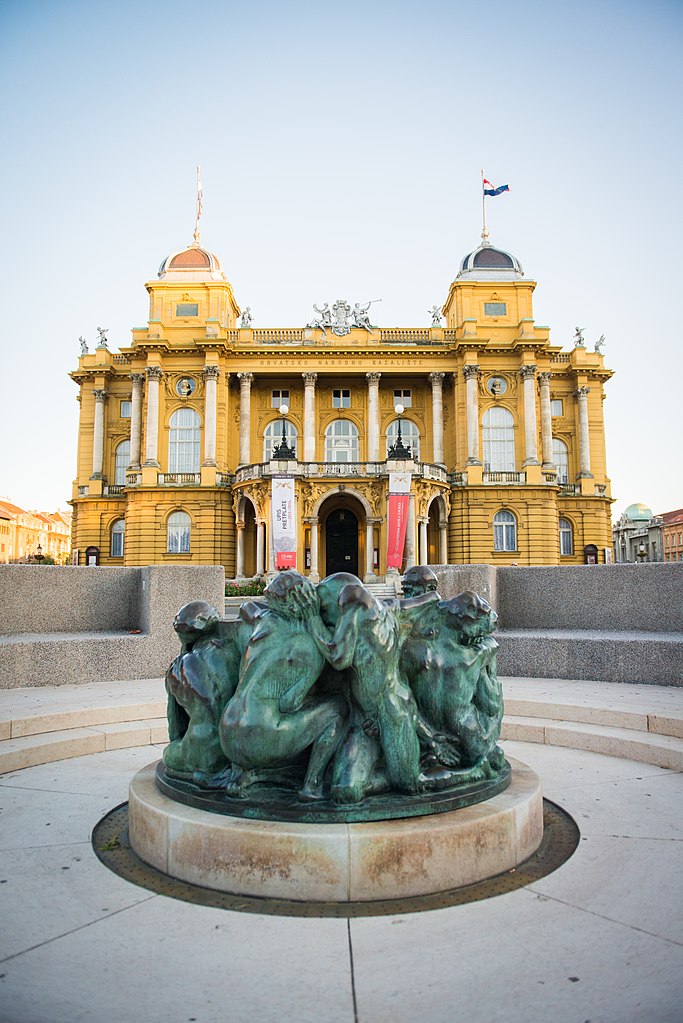
Another iconic landmark in Zagreb, the Home of Croatian Artists also known as Džamija (The Mosque), was designed by Meštrović and completed in 1938 - hence its other nickname, the Meštrović pavilion:
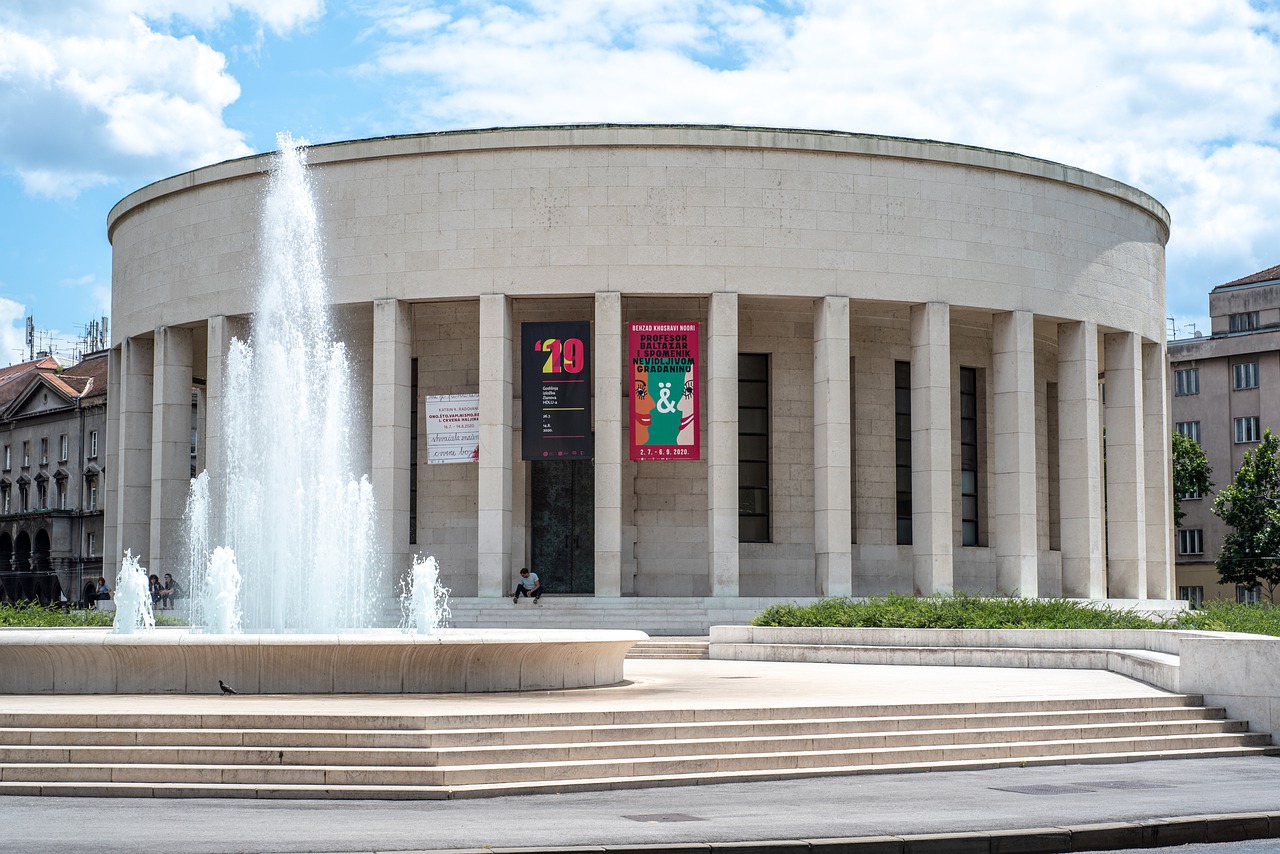
The gigantic statue of Gregory of Nin (Grgur Ninski) was initially installed at the Peristil in Split and later moved to its present location in front of the Golden Gate, where tourists in passing rub the saint’s big toe for luck.
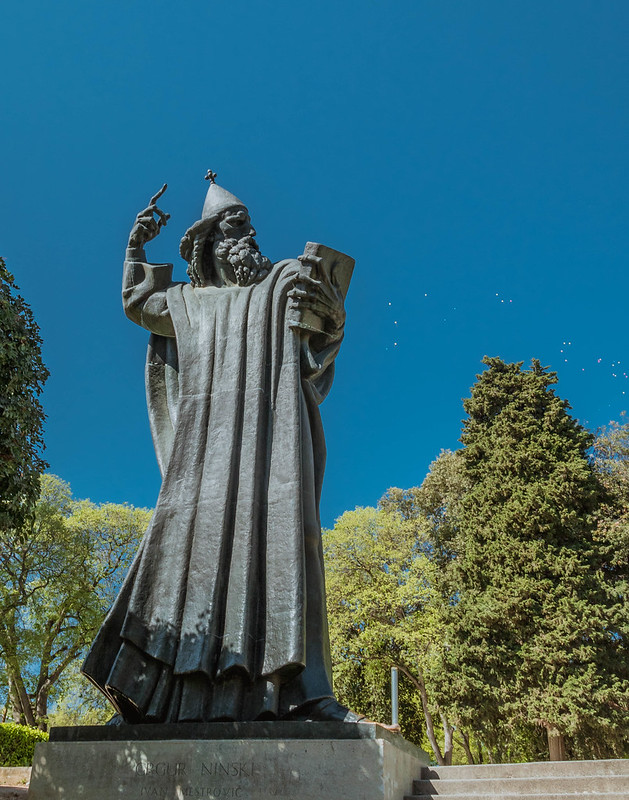
Photo: Statue of Gregorius of Nin in Split, Croatia by Marco Verch under Creative Commons 2.0
A lesser known fact about the master artist is that he was friends with another famous figure from these parts - the great inventor and scientist Nikola Tesla.
Tesla and Meštrović met in New York in 1924, where Meštrović had a solo exhibition at the Brooklyn Museum. Knowing that Tesla was also residing in New York at the time, the artist reached out with a letter expressing his wish to meet, sent from Hotel Gotham on December 13th:
Dear Mr Tesla, one of my main wishes in coming here was to meet you, wrote Meštrović.
Tesla wrote back from Hotel Marguery two days later:
Dear and great artist! I was happy to receive your letter and will be even more glad to meet you in person, as this has been a fervent wish of mine for many years now, replied Tesla with enthusiasm and proposed a meetup time. This was the beginning of a long friendship between the two men, each a master in his own field.
***
In the years that followed, Tesla saw other exhibitions of Meštrović’s work in the US, and wrote to the artist to express his admiration after an exhibition in Chicago in 1929.
They exchanged Christmas cards as well; they are kept at the Nikola Tesla Museum in Belgrade together with the letters and telegrams.
Another touching letter dates to November 12th, 1929 when Meštrović acted as a middleman for Matica srpska, a distinguished Serbian cultural-scientific institution that wanted to publish a biography of the great inventor.
I don’t know why they chose to go through me: either you weren’t replying to them, or they think you and I are closely acquainted making this a more convenient way [to reach you]. I would ask you to accommodate their request, not for their sake or mine, but for the sake of our nation, and most of all for the sake of younger generations who will see in you the most wonderful example of intellectual and moral virtue, urged Meštrović, going on to suggest that Tesla set a condition for his autobiography to be published in both the Latin and Cyrillic script.
***
In a telegram sent in 1939 Nikola Tesla expressed his wish for Meštrović to sculpt a bust of him.
Artists were known to frequently approach Tesla to ask if he would sit for a portrait, and he turned them all down - save for princess Vilma Lwoff-Parlaghy whose drawing was unfortunately lost. That he would personally reach out to Meštrović to commission a portrait bust only speaks to his respect for the master artist.
This is the telegram:
Sent from NYC to Zagreb on August 18th, 1939
The message reads,
For the sake of our descendants and all Slavic people I wish for a bust of me, made by the miraculous hand of Meštrović, to remain after my death. I don’t yet have cash, but I am willing to do everything to your satisfaction and mine by other means. My face is still smooth, my eyes bright, and I haven’t gone bald. Everyone wishes for your immortal work to be displayed here. Please send a telegram to state your opinion and intent. Your fan, Nikola Tesla.
Imagine having Nikola Tesla for a fan.
Meštrović promptly wrote back from Split:

Sent from Split to NYC on August 25th, 1939
The telegram sent to Tesla reads,
It would be my great pleasure to fulfil your wish. Funds not necessary. I am bound by contracts in Europe, I can’t go there [USA]. Can you be my guest in Split, if you can’t, send some photos, I remember you vividly. Greetings from Meštrović.
Tesla was 83 years old at the time and was unable to travel that far, so he didn’t get a chance to pose for Meštrović before he died. The master sculptor kept his word regardless, creating two sculptures of Nikola Tesla in the years that followed.
One is a bronze bust whose original plaster model is displayed at the Croatian Academy of Sciences and Arts in Zagreb; bronze replicas are on display at the Nikola Tesla Museum in Belgrade and the Technical Museum in Vienna.
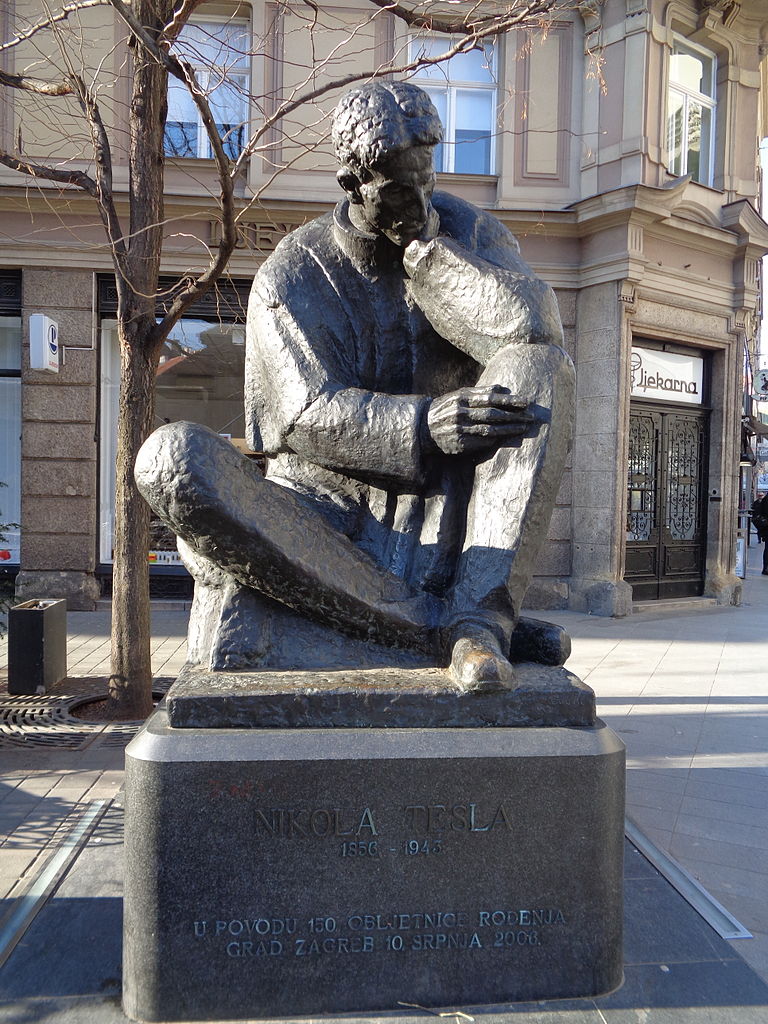
The other is the grand monument of Tesla displayed in Zagreb, shown on the photo above. It was originally installed in front of the Ruđer Bošković Institute in 1956, after Meštrović personally reached out to Croatian physicist Ivan Supek, the founder of the RB Institute. Supek recalled his correspondence with the artist for Jutarnji list/Tanja Rudež.
Meštrović was teaching at the University of Notre Dame in the US at the time, but kept close ties with his homeland. After an earlier sculpture of his, that of Croatian scientist Ruđer Bošković was installed in front of the Institute, he wrote to Supek saying he considered Tesla one of the greatest men from these parts. He said that he would gladly build Tesla a monument and asked for Supek’s opinion - naturally, he agreed, and the work was thus completed and displayed at the institute a year later.
In 2006, the monument was moved to its present location in the city centre, in the street named after Nikola Tesla.
To learn more about Ivan Meštrović and his legacy, visit the pages of Ivan Meštrović Museums / Muzeji Ivana Meštrovića.
Will Croatia Euro Coins Be Able to Feature Tesla?
July 27, 2021 - Last week, the Croatian National Bank announced five motifs to be featured on Croatia euro coins, with the image of Nikola Tesla being the most popular one according to the vox populi. However, these are just the first steps of the process of creating Croatian euro coins. Who has the ultimate say on whether Tesla is to be kept or to be scrapped off? A look into the procedure of approving the designs of euro coins.
The announcement of five motifs chosen to grace the national side of Croatian euro coins that came last Wednesday was soon greeted by a statement on the official website of the National Bank of Serbia. In it, NBS objects to the Croatian idea of using the image of Nikola Tesla. It's described as ''an appropriation of the cultural and scientific heritage of the Serbian people.'' Serbia also stated it would file a complaint if Croatia put his image on one of the coins.
The question is, to whom would these complaints be filed, and to what effect? Is there a set legal way to get Croatia to remove Tesla from the coins not yet minted? (Un)surprisingly, there are a few precedents guarding the question, as this is not the first time that one country objected to the design of another country's euro coins, claiming it belonged to its own national heritage.
In 2005, Slovenia's use of the Prince's Stone on the 2 cents coins launched a protest from the Austrian state of Carinthia. Prince's Stone is an ancient Roman column that was used during the early Middle Ages in the ceremony of installing the rulers of the Slavic principality of Carantania. The ceremony was conducted in the Slovene language, and Caranthania was located, in part, on the territory of present-day north-eastern Slovenia. The stone itself used to be kept in a museum in Klagenfurt, the capital of Carinthia, where it was considered a historical icon of the state. The Carinthian state government (headed by the then-governor Jorg Haider) issued a resolution of protest on October 25, 2005, which was rejected as "not to be taken seriously" by the Slovene foreign minister Dimitrij Rupel.
Ten years later, in 2015, Belgium issued a €2 commemorative coin (individual Member States are allowed to issue commemorative coins to celebrate subjects of major national or European relevance). To mark the Battle of Waterloo, and the 200th year anniversary of the defeat of Napoleon, the coin featured an image of the monument at the site. France objected, saying that the image carried a negative connotation.
According to the COUNCIL REGULATION (EU) No 729/2014 on denominations and technical specifications of euro coins intended for circulation, when a eurozone country wants to issue a new €2 commemorative coin, it is required to send a draft design of the coin to the Council, the European Commission and to other eurozone countries. In the end, as RFI wrote in 2015, ''Brussels has been forced to scrap 180,000 coins worth 1.5-million-euros that it had already minted before Paris got wind of the affair.''
And in 2013, Slovakia re-thought its idea of issuing commemorative coins with the images of Christian saints and missionaries Cyril and Methodius with crosses and halos above their heads, as some Member States pointed out that the designs went against the ''principle of respect for religious diversity in Europe''.
However, all of these disputes were started and resolved between the EU Member States, not a Member State and a third country, as is the case with Serbia. As European Commission Deputy Chief Spokesperson Dana Spinant said on Friday, ''the design of the national side of euro coins is decided by the country adopting the euro.''
The designs have to be passed from the Croatia National Bank to the National Council for the Introduction of the Euro for approval and then have to be confirmed by the government of Croatia.
That doesn't mean that the design lays solely in Croatia's hands.
The abovementioned Council Regulation also states that ''each Member State (....) should take into account the fact that euro coins circulate in the whole euro area and not only in the issuing Member State'', and should ''avoid the use of inappropriate designs''.
Recognizing the potential problem when it comes to defining the term ''inappropriate'' the Regulation states that ''uniform conditions'' for the approval of the designs should be laid down and also that ''in view of the fact that the competence for an issue as sensitive as the design of the national sides of the euro coins belongs to the issuing Member States, implementing powers should be conferred on the Council.''
Therefore, Croatia has to submit draft designs to the Council, to the Commission, and to the other Member States whose currency is the euro at least three months before the planned issue date. Since Croatia is set to enter the eurozone in 2023, that criterion shouldn't be difficult to meet.
Within seven days following the submission, any Member State whose currency is the euro may, in a reasoned opinion addressed to the Council and to the Commission, raise an objection to the draft design proposed by the issuing Member State if that draft design is likely to create adverse reactions among its citizens.
If the Commission considers that the draft design does not respect the technical requirements set out by the Regulation, it shall, within seven days following the submission, submit a negative assessment to the Council.
If no reasoned opinion or negative assessment has been submitted to the Council, the decision approving the design shall be deemed to be adopted by the Council.
In all other cases, the Council shall decide without delay on the approval of the draft design, unless, within seven days following the submission of a reasoned opinion or of a negative assessment, the issuing Member State withdraws its submission and informs the Council of its intention to submit a new draft design.
Since there are essentially two criteria to meet - the suitability of the design requirement and the technical requirement, both assessed by other Member States (the EU), the only tool any country outside of the EU can use is its political influence on a Member State to try and come up with a reasoned opinion as to why a draft design is ''likely to create adverse reactions'' - but only among its (a Member State's) citizens.
There is nothing in the Regulation on the influence the design may have on the non-EU countries. In fact, the Regulation even makes sure to point out that the other Member States whose currency is not the euro are excluded from deciding. Will Croatia be able to keep Tesla on its coins? If these provisions are anything to go by, then yes.
For more on politics, CLICK HERE.
Would Nikola Tesla Have Preferred to be on a Croatian or Serbian Coin?
July 26, 2021 - A global citizen equally proud of his Serb origin and Croat homeland, what would Nikola Tesla have made of the latest Balkan political row over his identity?
It is almost 80 years since the genius that was Nikola Tesla died alone in a New York hotel room, the end of an extraordinary life of invention and creativity that changed the world for the better.
He certainly deserves to be remembered and celebrated for all he contributed, but the latest proposed recognition of his genius has once more ignited a Balkan political row and fired up the Internet's army of Balkan keyboard warriors.
It wasn't long after starting Total Croatia News 6 years ago that I learned that the two most clickbait evergreen topics which would attract tons of aggressive comments were the origins of Nikola Tesla and anything that mentioned the word Tito. As such, I have learned to avoid referring to either for the most part, but the latest row regarding Tesla's origins has included statements from the Croatian President, as well as both Croatian and Serbian Prime Ministers.
Someone once told me that the quickest way to start a lively negative debate on Facebook in this region is to invite thoughts on whether Tesla was a Serb or a Croat. It is a question that the Serb authorities take very seriously, as appears to be the case once again after Nikola Tesla was voted to appear as a symbol of Croatia on three coins when Croatia eventually joins the EU.
Before we dive into the quagmire, it is worth recalling Tesla's own words on the subject, back in 1936:
"I am equally proud of my Serb origin and my Croat homeland. Long live all Yugoslavs."
A nice, balanced statement paying tribute to the two nationalities with which he clearly associated, even though he went on to be an American citizen. Nobody disputes that he was ethnically Serb, or that he was born and grew up in Smiljan, a small village in what is today modern Croatia.
But then things get interesting. Serbia claims Tesla as their own - and ONLY theirs - there is no question that Tesla is anything but a Serb, despite the great man professing equal pride at his Croat homeland. Serbia has certainly done a great job at getting the message out there, even naming its main international airport after him. But the proud Serbs who claim him as their own fail to mention a couple of relevant facts. Tesla never had Serbian citizenship, and he only actually spent 31 hours in Serbia in his entire life, a solitary visit in 1892. If you travel to Serbia to search for places that Tesla spent time or created things, then you are going to be disappointed, as there is nothing to see, apart from his ashes which were transferred to Belgrade in 1952. Hardly surprising, given that he only spent 31 hours of his life in Serbia.
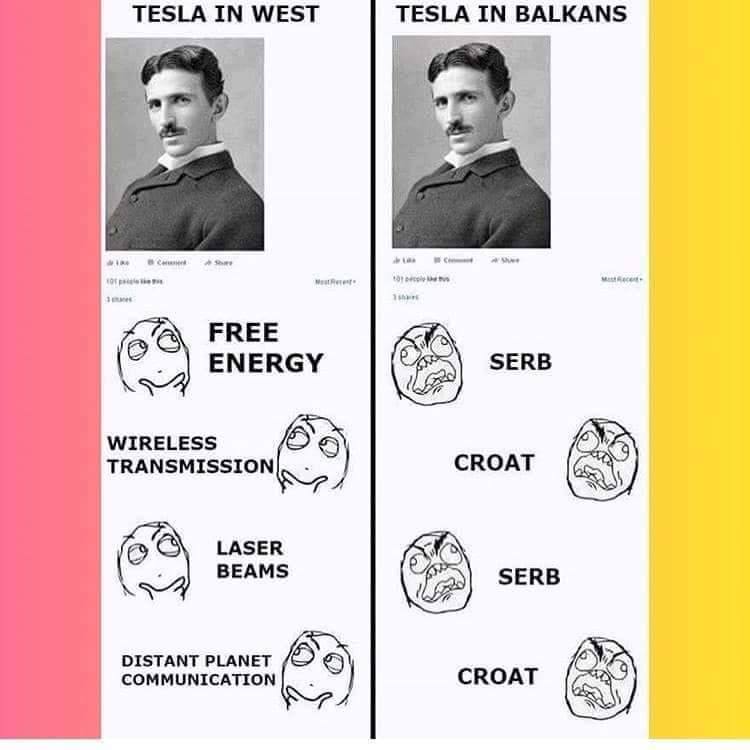
The claim that he was born in Croatia should also be clarified, as Croatia was not an independent country at the time of his birth, rather part of the Austro-Hungarian Empire. Smiljan was in the zone of the Military Frontier at the time, and his citizenship was Austrian, before he bcame an American later in life. Having said that, the quote above shows that Tesla identified with both his Serb ethnicity and Croatian homeland.
There is, of course, a certain irony - given the nationalist passions in some quarters of this region - of Serbia objecting to the celebration of a Serb on a Croatian coin, but that is perhaps another discussion.
What can also not be disputed is that Smiljan today is firmly within the boundaries of modern Croatia. And for those looking for evidence of Tesla's formative years, there is plenty to explore, from the visitor centre at Smiljan, his school in Karlovac, the surrounding nature which inspired him, and the city of Sibenik, which was the first city in the world to have street lights powered by alternating current. It is probably worth mentioning that had Tesla's education and life experience continued in this region, he would probably not have fulfilled his potential, as it was only once he got to the States and was exposed to bigger things that he flourished.
As I wrote a couple of years ago in It is Time for Croatia to Claim its Nikola Tesla Heritage, Croatia has thus far done a terrible job marketing its Tesla heritage, and it is one of the several gifts that it possesses which are totally underutilised. The birthplace of Tesla should be a global attraction, and one which is there to inspire the minds of the next generation. It could - and should - be developed for that purpose, rather than the very poor effort that we have at the moment at Smiljan - there was not even a cafe the last time I visited. Combining the Tesla story with the huge success of Croatia's 21st-century innovator, Mate Rimac, is a compelling story which will bring more interest not just to Croatia, but to the wider region.
Would Tesla have preferred to be represented on a Croatian or Serbian coin 80 years after his death? He would probably not have had to choose, as Serbia will also get to choose its motifs for the coins if and when it adopts the euro. And wouldn't it be nice for him to be commemorated by both, given that he was equally proud of his association to both?
Just as Nikola Tesla was equally proud of his Serb origins and his Croat homeland, wouldn't it be nice if his Serb origins and Croat homeland could agree to celebrate the genius of a man who gave the world so much, rather than try and score cheap political points?
Milanović: Once Serbia Enters Euro Zone, Let It Propose Tesla As Well
ZAGREB, 24 July, 2021 - President Zoran Milanović on Saturday commented on the reactions from Belgrade following the announcement that Croatia will put the image of scientist Nikola Tesla on euro coins, saying that "once Serbia enters the euro zone, let it propose Tesla as well."
Writing in a Facebook post, Milanović recalled a failed initiative by the Serb National Council (SNV) of more than ten years ago to establish "a Serb ethnic bank" in Croatia that was to be named after Nikola Tesla.
The initiative was launched in cooperation with "the state leadership and a development fund of Serbia, which allocated nearly five million euro of Serbian taxpayers' money for that purpose", and the SNV's idea was also for Croatia to make its contribution to the initial capital.
"The entire project for an ethnic bank was half forgotten over time, primarily because it was untenable businesswise," Milanović said.
Milanović, who had served as prime minister at the time, said that he and his finance minister, Slavko Linić, had tried to find a solution, but to no avail, despite the millions of euro from Belgrade and the Croatian contribution. "Our intentions were sincere, but it didn't work."
"It's all right when a financial institution (Tesla Bank) should be established with the joint financial support of Croatia and Serbia. In that case, I guess, Tesla is our common heritage. When Croatia, a forthcoming member of the euro zone, proposes that Tesla should be on a coin, that is cultural appropriation according to Serbia's central bank," Milanović said, adding in conclusion: "Once Serbia enters the euro zone, let it propose Tesla as well and everyone will be happy."
For more news about Croatia, CLICK HERE.
Celebrate Nikola Tesla On His 165th Birthday This Weekend in Gospić
July 6, 2021 - This Saturday marks the 165th anniversary of the birth of the genius born in Smiljan, and the Tourist Board of Gospić, the city of Gospić, and the Nikola Tesla Memorial Center have prepared a worthy event called ''Tesla Power of Lights'' to celebrate Nikola Tesla in style.
Turističke priče reports that as part of the celebration of the 165th anniversary of the birth of Nikola Tesla on July 10th, a lot of content was prepared that will serve as a kind of reminder of the fact that one of the world's greatest geniuses, Nikola Tesla, was born in Lika. On his birthday, this Saturday, as part of the July program in Gospić, the event "Tesla Power of Lights" will be held.
It is a one-day event to celebrate Nikola Tesla, organized by the Tourist Board of the City of Gospić, the City of Gospić, and the Nikola Tesla Memorial Center, and the program will be held in the evening. This year, a light spectacle will be organized in Gospić and its surroundings, and citizens and visitors will be able to enjoy a laser show, among other things. In addition to the extraordinary light effects that will spread the sky over the city, the program of the celebration also includes a multitude of contents on the main city square.
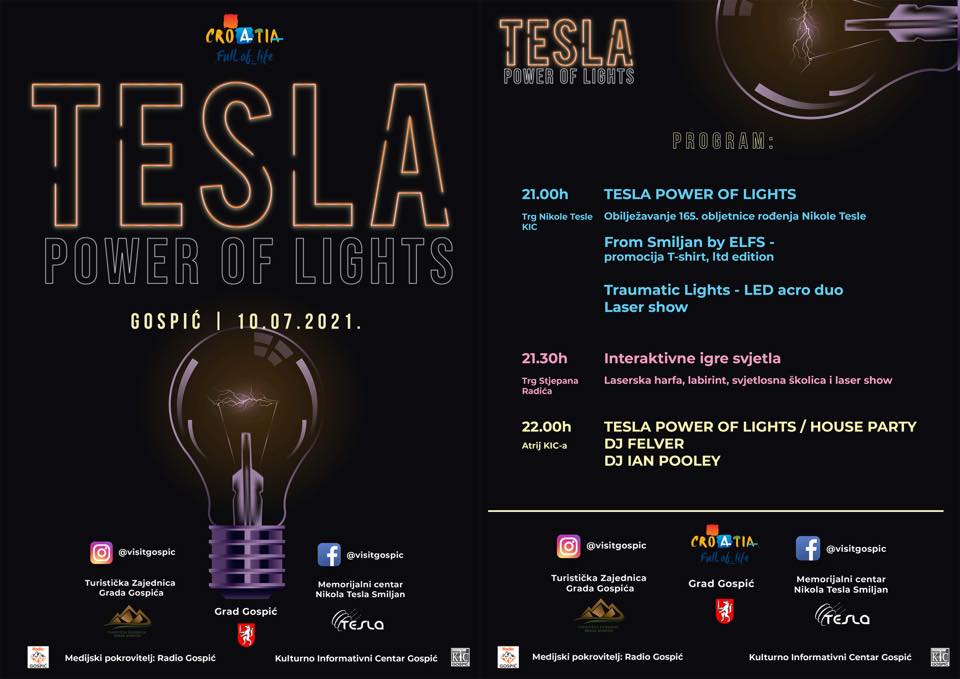
Gospić Tourist Board Facebook Page
Thus, Interactive Games of Light, Laser Harp, Light Labyrinth… will be held on Stjepan Radić Square, and part of the “Tesla Power of Lights” program will also take place on the newly built Nikola Tesla Square. At 9 pm, in the Atrium of the Cultural Information Center Gospić, there will be a promotion of T-shirt From Smiljan by ELFS and Traumatic Lights - Led acro duo, followed by a House party that will start at 10 pm. DJ Felver and DJ Ian Podley will perform.
Under the colored light beams will be buildings related to the life of Nikola Tesla in Gospić, and the Nikola Tesla Memorial Center in Smiljan, which includes the birthplace of the great inventor, physicist, and inventor, will have an Open Day on July 10.
Total Croatia included Nikola Tesla in its guide to Croatian inventions and discoveries, which you can read HERE.
For more news about everything made in Croatia, be sure to follow TCN’s dedicated page.
Nikola Tesla Statue, Largest in the World, Unveiled in Varaždin!
April 24, 2021 - The famous Croatian sculptor Nikola Vudrag was in Varaždin, his hometown, where his Nikola Tesla statue, the largest in the world, found its permanent home.
As Jutarnji.hr reported, a special occasion was held in Varaždin on Wednesday, where Mayor Ivan Čehok presented the Nikola Tesla statue, the work of renowned Croatian artist Nikola Vudrag. The iron statue of 12.5m high, 4.5m wide statue and weighing almost 4 tons, is now the largest statue in the world dedicated to the Croatian genius.
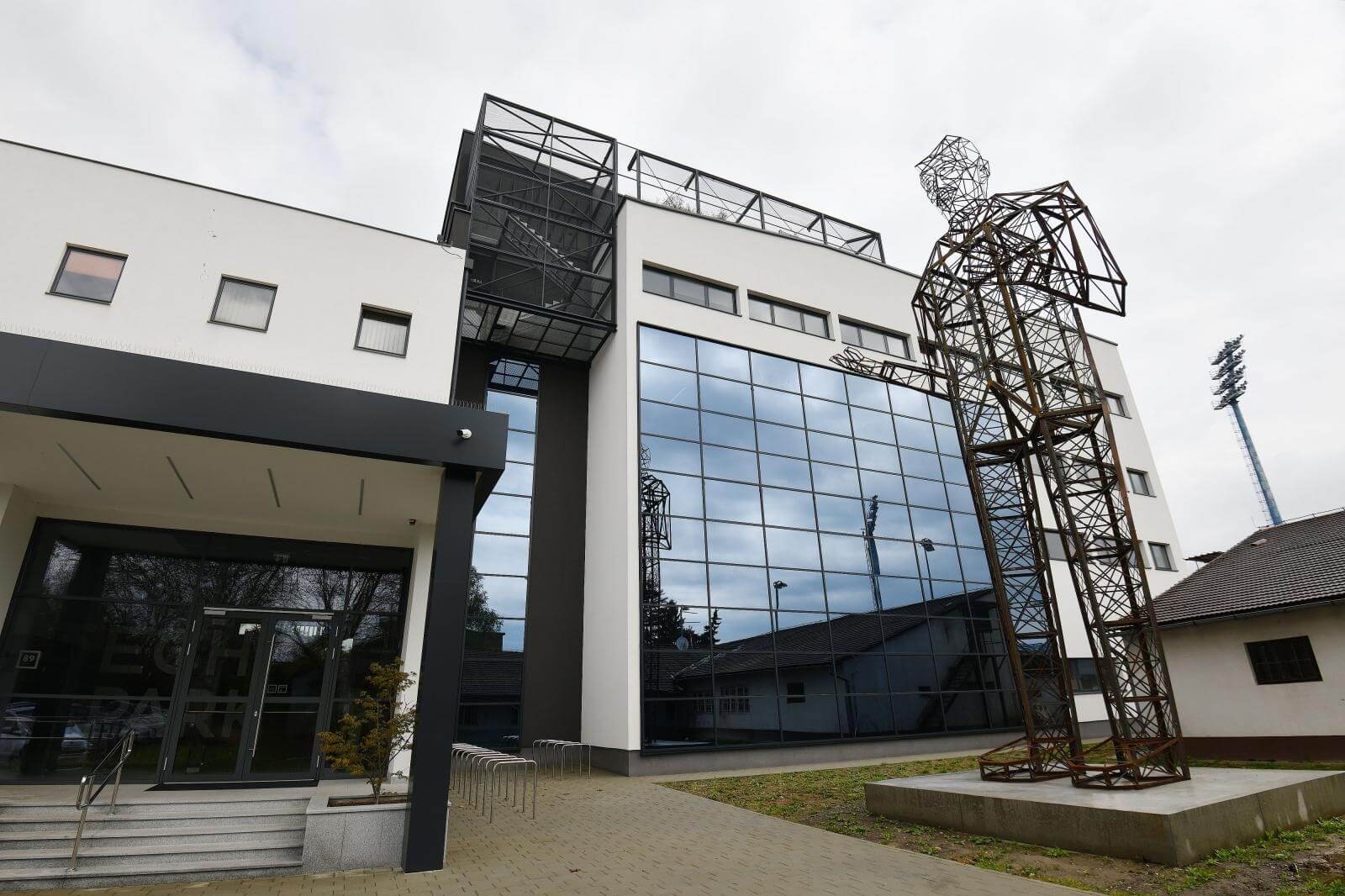
Credits: Pixsell
The artist
Nikola Vudrag is an artist born in 1989 in Varaždin, and now currently living in Zagreb. After growing up next to his grandfather and father, both metalworkers and welders, he became interested in the creative aspect of metalworking, craft, construction, and art.
He has now been sculpting and exhibiting since 2005 all around Europe and Croatia, on more than fifty independent and group exhibitions. He is the author of several public awards and medals. He deals with philosophical and linguistic concepts in fine arts but pays most attention to the classical approach and symbolism as the language of visual art.
The Nikola Tesla statue, the largest in the world
It is a Tesla Powerline sculpture, constructed in 2017 by Nikola Vudrag, for the exhibition "Tesla mind from the future" in Zagreb, in the form of a model for a high transmission line. Earlier that year, Vudrag had been chosen as the author of the portrait "Our Lady of Loreta", a 12 m high monument in Primošten.
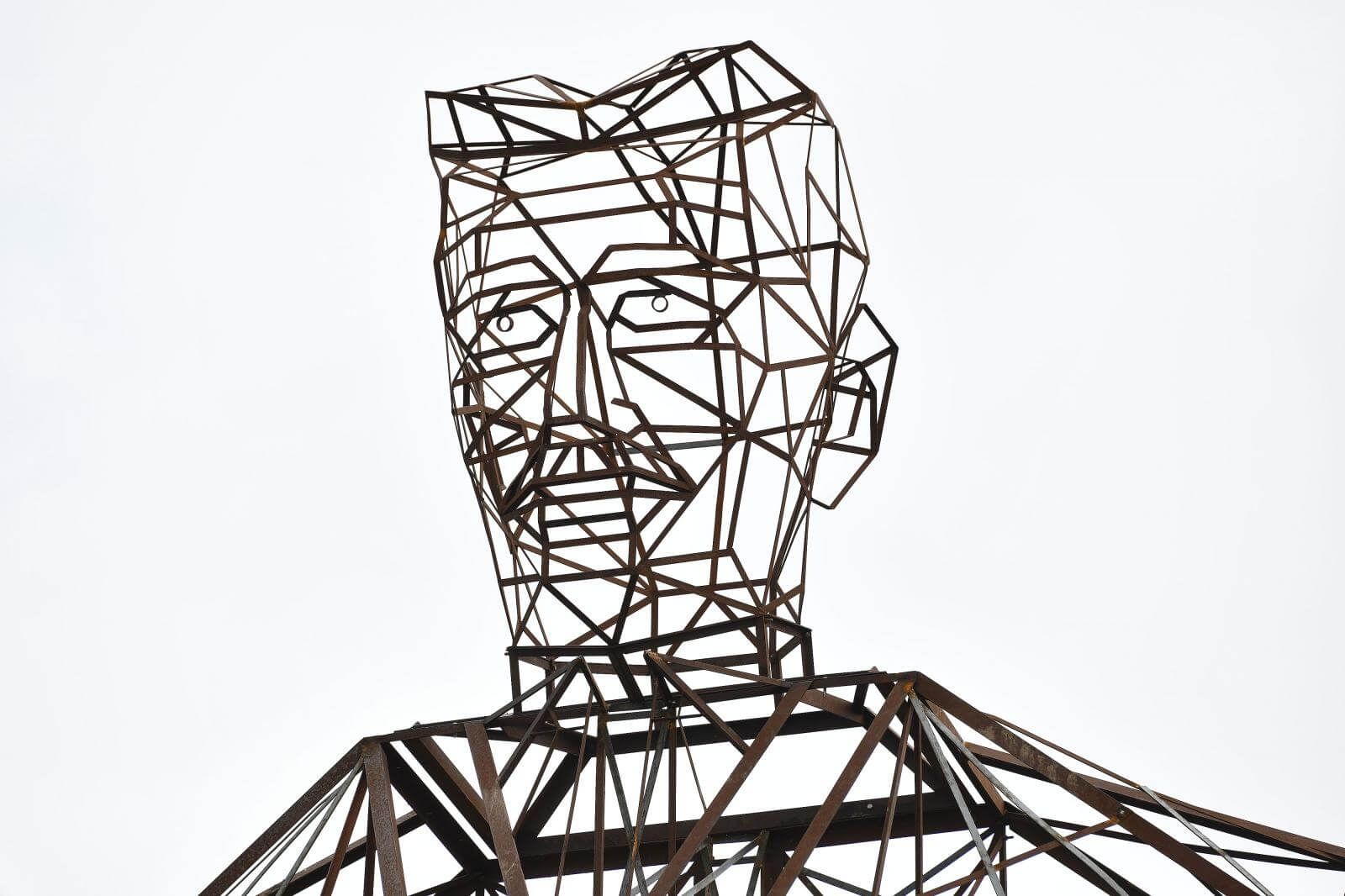
Credits: Pixsell
"Nikola Tesla's sculpture began as a conceptual project as part of the rethinking of Croatian visual identity, in which power lines would alternate with sculptures dedicated to many real and narrated protagonists, including Tesla, Oak, Triumphal Arch, Torpedo, Veli Jože, Bear and the like.", said Nikola Vudrag, adding that sculptural forms would replace some of the transmission lines on the tourist route throughout Croatia.
Nikola Tesla, born in 1856 in the town of Smiljan, was an inventor, electrical engineer, mechanical engineer, and futurist best known for his contributions to the design of the modern alternating current (AC) electricity supply system. All over the world, he’s been celebrated in several forms, and among them, through sculptures and statues. Now, the largest in the world has been erected in the city of Varaždin.
The unveiling
Before its presentation in his native Varaždin, Vudrag’s monumental work had been exhibited in cities such as Zagreb, Budapest, and Berlin, and from now on it will be permanently placed in front of the Varaždin Technology Park.
"It started with a half-meter sketch, until the Tesla Mind from the future exhibition appeared, for which I made a similar 12-meter sculpture," said Vudrag, noting that parts of the sculpture were exhibited at his solo exhibitions in northern Croatia.
"Six months ago, the idea was launched to finally collect this Tesla from all locations and put it in front of the Technology Park. He finally found his happy home," said Vudrag, thanking the project's initiator, Varaždin's Varkom director Željko Bunić and the City of Varaždin, for choosing his hometown as the place were the almost 13 meters tall Nikola Tesla statue will be permanently erected.
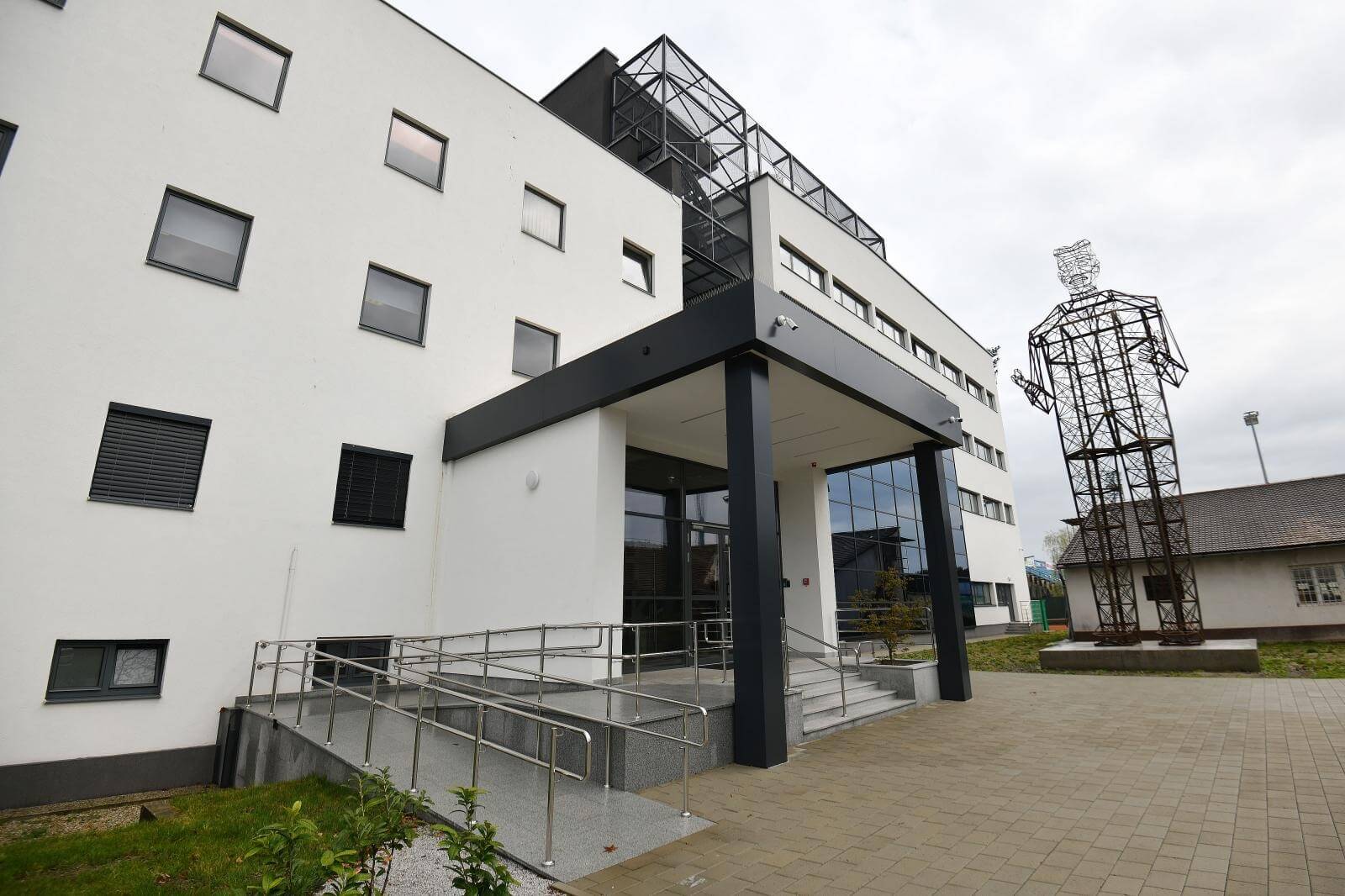
Credits: Pixsell
Mayor Ivan Čehok, who was present in the ceremony, pointed out that, considering its appearance points to the essence of his work, it is the only sculpture of Nikola Tesla that most clearly shows the greatness of his work.
"We decided to place it in our renovated Technology Park because, in fact, this monument goes with innovation, with what today represents the innovation potential not only of Varaždin but also of Croatia," said Čehok.
"The installation started a month ago, first preparing the entire foundation structure, grounding, then placing legs up to six meters high, then pouring concrete and adjusting the balance of the plane. Then we lifted the upper torso, arms, and head with two cranes of twenty meters. six months of planning and three years, which he "spent" in studios, foreign and domestic exhibitions, the monument to Nikola Tesla finally found a permanent home in front of the Technology Park building in Varaždin, a city institution dealing with new technologies’’, Nikola Vudrag told Jutarnji.
Total Croatia included Nikola Tesla in its guide to Croatian inventions and discoveries, which you can read HERE.
You can find more information about the city of Varaždin in Total Croatia’s Varaždin in a Page 2021.
For more news about everything made in Croatia, be sure to follow TCN’s dedicated page.
Nikola Tesla Returns To Gospić After 30 Years
August 22, 2020 – After being destroyed in the war, the famous statue of genius Nikola Tesla will finally return to his home town
Following a 30 year absence, the famous statue of Nikola Tesla will be returned to his home town of Gospić. The original Tesla monument that once stood in the central town square, created by Croatian sculptor Frano Kršinić, was blown up during the 1990s Homeland War.
Gospić mayor Karlo Starčević today signed a contract approving construction works for the renovation of the square in front of the Gospić Culture Information Centre, where the Nikola Tesla statue will be placed. The contract is worth about HRK 1.8 million.
The location where the monument will stand is planned as a quiet area with several benches and gravel footpaths. The statue is an exact replica of the one previously lost to Gospić. Copies of this statue currently reside outside the School of Electrical Engineering section of Belgrade University and on the American side of Niagara Falls (main picture).
Nikola Tesla is honoured on both sides of Niagara Falls. This is his statue on the Canadian side © Milan Suvajac
An inventor and hugely innovative engineer, Nikola Tesla is best known for pioneering the alternating current (AC) electricity supply system. AC enables electricity to be provided safely to every home, street and business today. Tesla was born in 1856 in the village of Smiljan, in Lika, just six kilometres from Gospić.
In 1862, his family moved to Gospić where Tesla's father worked as an Orthodox parish priest. Nikola Tesla himself was supposed to follow his father and his mother's father into the Orthodox priesthood. Thankfully, he did not. In 1870, Nikola Tesla moved to nearby Karlovac to attend the Higher Real Gymnasium. A new Nikola Tesla exhibition centre is currently being built there, next door to the place of his former studies.
After Karlovac, Nikola Tesla continued his studies in Austria, and then spent some time teaching and working in Hungary. He eventually got a job working for Thomas Edison's company in Paris. While there, his incredibly innovative work was soon noticed and he was invited to go and work for the company in America.
Nikola Tesla, pictured before his work in America © State Archives
Thomas Edison - also a pioneering inventor - is frequently cited as one of the most innovative figures in the development of electricity supply. However, Edison was adamant that direct current (DC) would be the best way to distribute electricity. The DC system he championed was in direct competition to that proposed by his one-time employee, Tesla. Despite Edison's wealth and power, the DC system he fought hard to impose proved to be impractical and unsafe. Instead, the AC distribution design, perfected by Tesla, became the standard supply system that the world uses today.
Nikola Tesla stayed in America for the rest of his life and continued to create countless pioneering inventions. He worked within the fields of early x-rays, wireless power supply, electromagnetic radiation and radio waves, before his death in 1943. In the years since he died, interest in the enigmatic Nikola Tesla has only grown.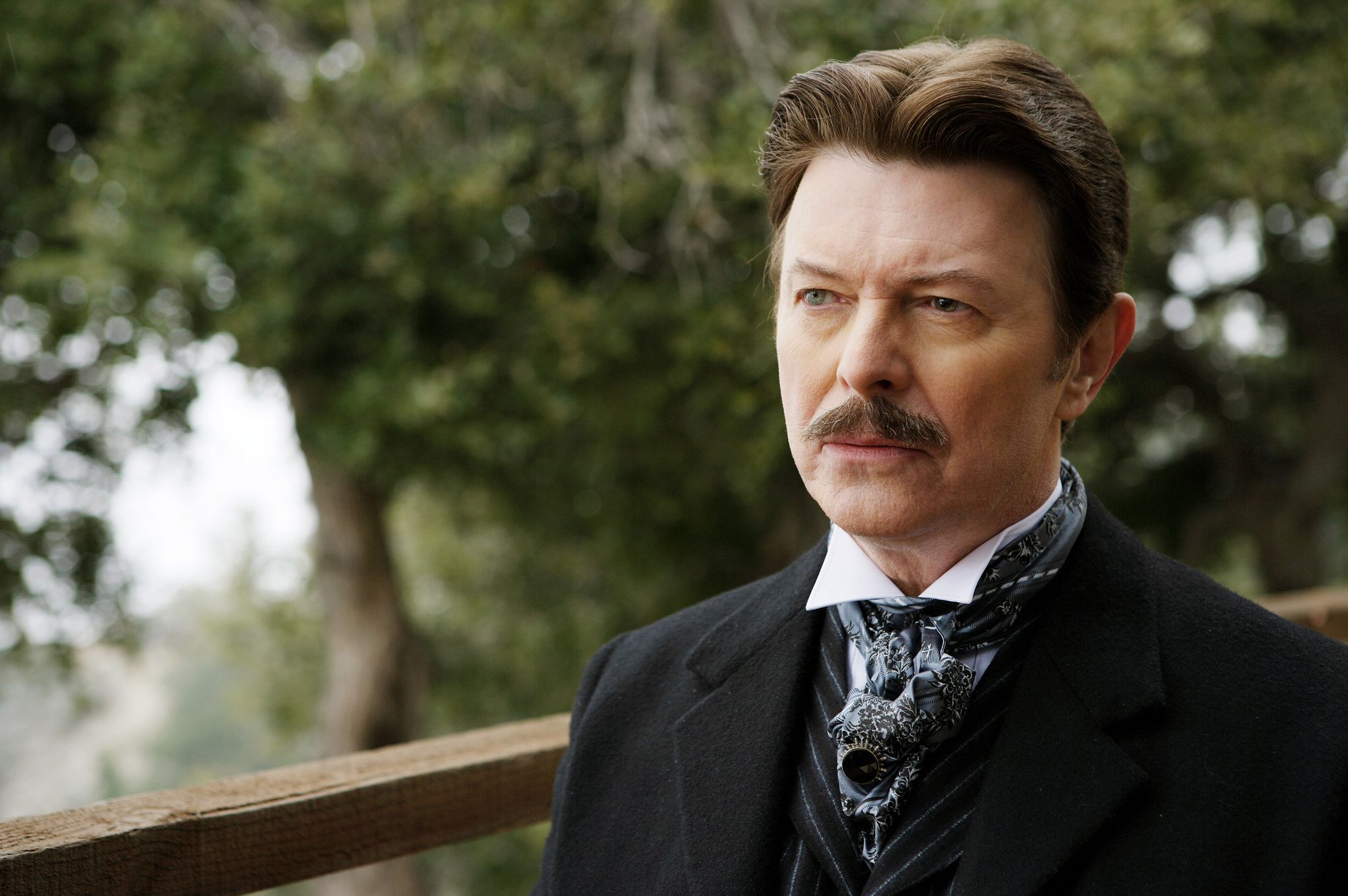
David Bowie playing Nikola Tesla in Christoper Nolan's 2006 movie The Prestige © Warner Brothers
A mystique continues to surround him, not least because many of his wondrous ideas remain unrealised. Nikola Tesla has been portrayed in film by Nicholas Hoult and David Bowie (the latter, famously, in Christopher Nolan's The Prestige). The national airport in Belgrade, Serbia is named after him, as is Serbia's largest power plant. In Croatia, over 130 streets are named after Nikola Tesla.
Nikola Tesla Experience Centre Project Presented in Karlovac
ZAGREB, April 21, 2020 - Karlovac County authorities on Tuesday presented the Nikola Tesla Experience Centre, which is being built by the Karlovac High School, on the occasion of World Creativity and Innovation Day.
Damir Pintarić, director of the AB construction company in charge of the project, said that the centre has a gross area of 750 square metres.
The contractor is currently building partition walls and will soon start installation works and work on the roof and facade.
Pintarić said that in the current situation caused by the coronavirus pandemic, the company had to reduce the number of workers and introduce anti-epidemic measures.
Deputy county head Martina Furdek Hajdin expressed hope that the new centre would be a place where young people would find the inspiration to be innovative and creative, the more so as Tesla attended the Karlovac High School.
The project is worth HRK 15 million and its first stage will be completed by September.
Furdek Hajdin said that money for the completion of the project was expected to come from the EU's next financial perspective.
The county has secured HRK 9.6 million for the project, including one million from the Ministry of Culture.
More science news can be found in the Lifestyle section.
Founding of Niagara Tesla Innovation Centre Marked by Croatian Tie
Tuesday, January 15th, 2020, marks the celebration of two historical events. The occasion of the international opening of the first Croatian EU Presidency and the founding of the TESLA INNOVATION CENTRE (TIC) in the City of Niagara Falls, NY. In honor of these two outstanding historic achievements by a young Croatian Republic, The Academia Cravatica Institution and the Research and Development Center-Teslopolis, along with the founders of the TIC, and representatives of the City of Niagara Falls, tied a red Croatian tie, as a symbol of innovation, love, and unity, on the Nikola Tesla monument, made by Croatian sculptor Frano Kršinić in 1976. The Tesla Monument was erected on the site of the world's first hydroelectric plant that same year.
The main intention of the first Tesla Innovation Centre of its kind to be built on U.S. soil and the first in history to denote an official association between American and Croatian institutions is to return Niagara Falls to its heritage, legacy and the spirit of innovation of Nikola Tesla over the next ten years. The Tesla Innovation Centre will launch and implement a series of multidisciplinary projects and activities inspired by Nikola Tesla, and to build his center in the City of Niagara Falls City, the first of its kind in the world.
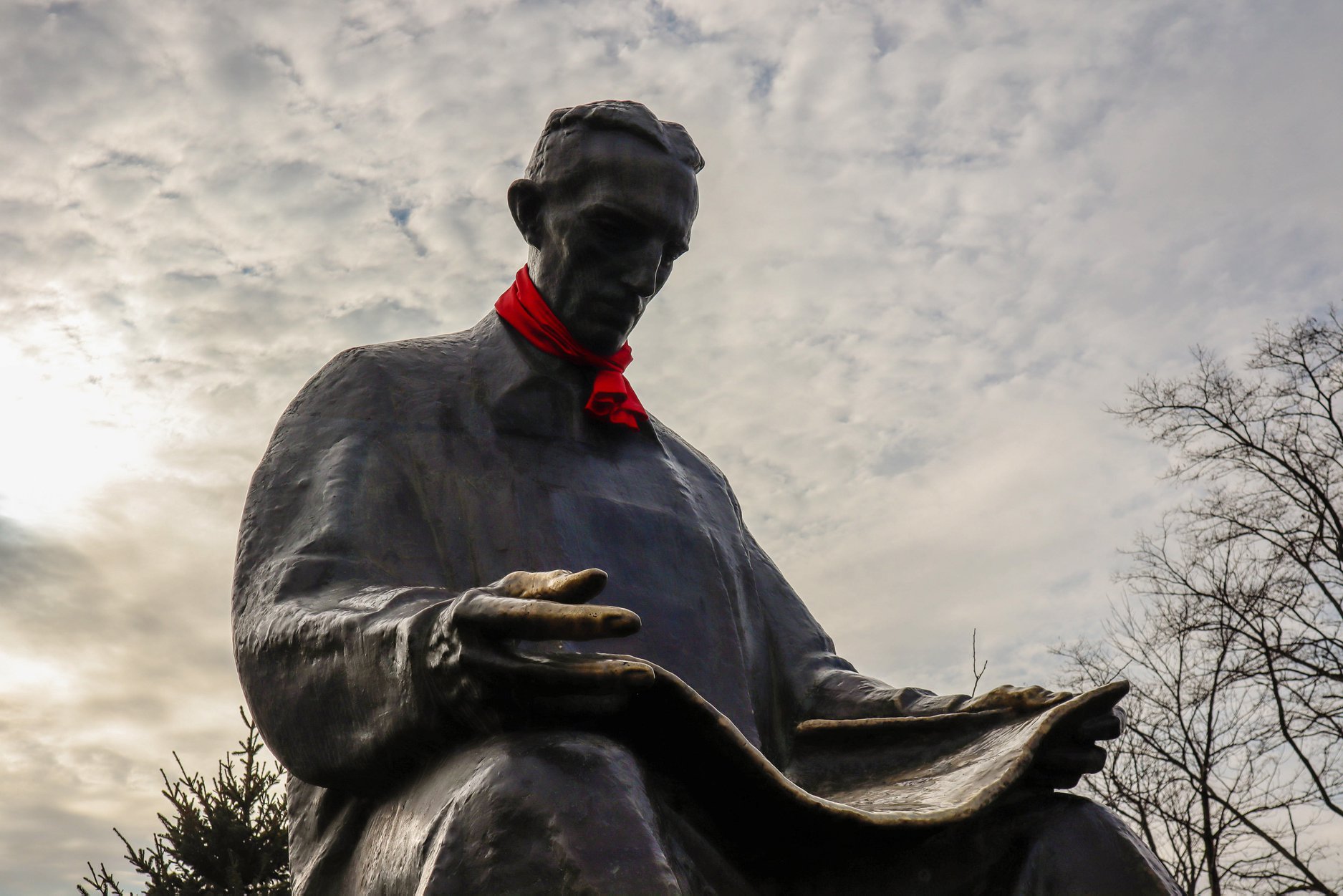
Tesla's AC (alternating current) system for the Niagara Falls hydroelectric plant, the first of its kind in the world, was set up in 1896, and it ushered in a new era in human civilization development. Tesla's dream of giving people the energy and power of the Niagara Falls, which he saw as a child on a lithograph in the laboratory of the school he attended in Karlovac and began researching more about the power of these waterfalls at the age of 17, stated, "I was fascinated by a description of Niagara Falls I had perused, and pictured in my imagination a big wheel run by the Falls. I told my uncle that I would go to America and carry out this scheme. Thirty years later, I saw my ideas carried out at Niagara and marveled at the unfathomable mystery of the mind. "

The tie is an original Croatian product and a symbol of love, unity, and innovation, which was created in the 17th century by Croatian women and recognized at the French Court as an extraordinary fashion accessory under the name of the cravat. From France, the cravat went on its journey and development, generating not only one of the most fashionable accessories but also a whole range of symbols of the human desire for the creation, beauty, and refinement of the human being in his pursuit of a free and dignified life. The act of tying the tie of love to the monument of Nikola Tesla is built on one of the most influential legacies of the City of Niagara Falls itself. Niagara Falls has a significant history and moments in the abolition of slavery and the human pursuit of a free and dignified life. Subsequently, Nikola Tesla dedicated his entire life and work, which he selflessly gave to humanity, the freedom and dignity of human life with what he achieved with the realization of the uses of the Hydroelectric Power Plant in Niagara Falls. TESLA INNOVATION CENTRE wants to continue that legacy, above all in the spirit of humanistic paradigms inspired by Tesla, its discoveries and technologies, which in our 21st century, people can experience technological realization!

TIC FOUNDERS and BOARD MEMBERS:
Nicholas A Baio- Co-Managing Director of AIPH Worlds Fair and Expo 2025 & 2026.
Helena Bulaja Madunic – TESLOPOLIS CEO, founder, Tesla Expert, Creative Director, Visionary Leader, and Storytelling Innovator.
JACOB J. FLEMING SR. - Founder and Executive Editor of The Messenger Of Niagara Falls NY, NY. Niagara Falls, NY's first black-owned and operated newspaper and media outlet.
NIAGARA FALLS CITY REPRESENTATIVE and TIC partnering organization:
Sara Beilein Capen - executive director of the Niagara Falls National Heritage Area and Chairperson of the Alliance of National Heritage Areas, which is an alliance of the 49 Congressionally-designated National Heritage Areas throughout the United States.


